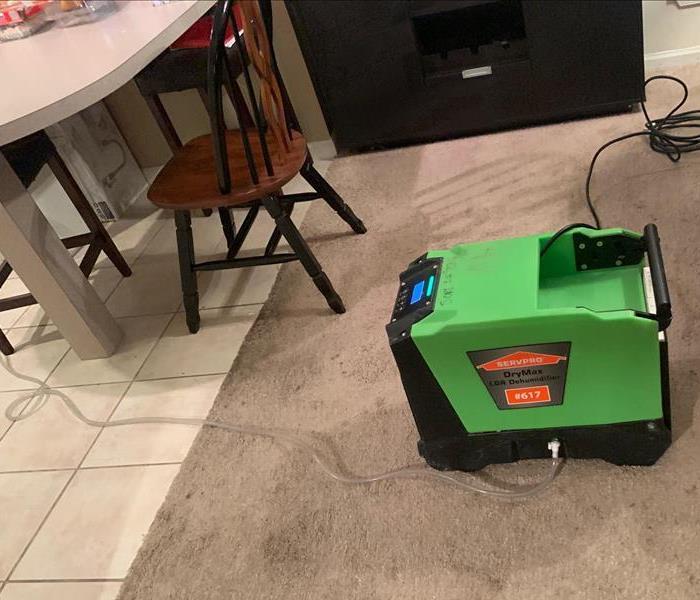Foundation Cracks: What Is Normal and When to Worry
10/16/2024 (Permalink)
A strong and solid foundation in Orlando, FL, is essential to the integrity of any home. However, over time, cracks may develop in foundations due to various factors like settling, weather conditions, or even natural wear and tear. Homeowners often find themselves asking, "Are these cracks normal?" and, more importantly, "When should I be worried?"
Understanding the different types of foundation cracks and knowing when to seek professional help is crucial to prevent further structural damage. In this blog, we’ll dive into expert insights to help you assess your foundation cracks with confidence.
What Causes Foundation Cracks?
Before determining if a crack is serious, it's essential to understand the underlying causes. Here are the most common reasons foundation cracks occur:
- Soil Movement: Expansive soils, such as clay, can shrink and expand with moisture changes, putting pressure on the foundation.
- Settling: New homes often settle within the first few years, leading to minor cracks. This is a normal process as the foundation adjusts to the soil.
- Temperature Fluctuations: Freeze-thaw cycles can cause the soil to contract and expand, affecting the foundation.
- Water Damage: Poor drainage around the home can lead to excess moisture, which weakens the foundation over time.
Types of Foundation Cracks: What’s Normal?
Not all foundation cracks are a cause for alarm. Some are entirely normal and can be managed with regular maintenance. Below are some of the most common types of cracks and what they indicate:
- Hairline Cracks: Typically less than 1/8 inch wide, hairline cracks are common in newly built homes as they settle. These are usually not a concern as long as they remain small and stable.
- Vertical Cracks: Often a result of normal settling, vertical cracks are typically not serious. However, if they become larger over time, it may be time to investigate further.
- Diagonal Cracks: Diagonal cracks can occur due to uneven settling or shifting in the foundation. While they can be normal, wider diagonal cracks may require professional attention.
- Horizontal Cracks: These are more serious. Horizontal cracks, especially in basement walls, often indicate significant pressure on the foundation from soil or water. These cracks can lead to structural problems and should be inspected by a professional immediately.
When to Worry About Foundation Cracks
While some cracks are normal, others may signal more serious structural issues. Here’s how to tell when a foundation crack requires professional attention:
- Width Matters: If a crack is wider than 1/4 inch, it is generally a cause for concern. Larger cracks often suggest more severe structural issues.
- Expansion Over Time: If you notice a crack expanding or changing direction over time, this could indicate ongoing foundation movement.
- Water Seepage: Cracks that allow water to seep into your basement or crawl space need to be addressed immediately. Water intrusion can lead to further foundation damage and other costly repairs.
- Bowing or Buckling Walls: Horizontal cracks accompanied by bowing or buckling walls often indicate severe pressure on the foundation and require urgent attention.
According to the National Association of Home Builders (NAHB), nearly 25 percent of homes in the U.S. will experience some form of structural distress, including foundation issues, during their lifespan. Addressing foundation cracks early on can help mitigate the risk of significant damage and expensive repairs.
How to Check for Foundation Cracks
To check your foundation for cracks, follow these steps:
- Inspect the Exterior: Walk around the perimeter of your home and look for visible cracks in the foundation. Pay close attention to areas near downspouts and along corners.
- Check the Interior: Look for cracks along basement walls, around windows, and in the floors. Any unusual gaps or widening of cracks should be noted.
- Monitor Changes: Mark the ends of any cracks and take note of their width. Recheck periodically to see if they are expanding.
- Hire a Professional: If you're unsure or notice any concerning cracks, it’s always best to consult with a foundation repair specialist for a thorough assessment.
Expert Help When You Need It
Understanding when to worry about foundation cracks can save homeowners from significant structural issues down the line. While some cracks are a natural part of a home settling, others may signal more severe problems. The best course of action is to regularly inspect your foundation and call in an expert when necessary. If you have concerns about foundation cracks in your home, SERVPRO® is Here to Help® with expert inspections and repairs.
By staying proactive and informed, you can protect your home and ensure a safe, stable foundation for years to come.





 24/7 Emergency Service
24/7 Emergency Service
